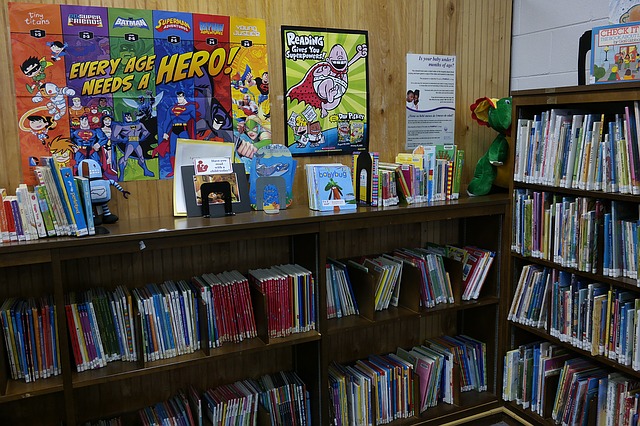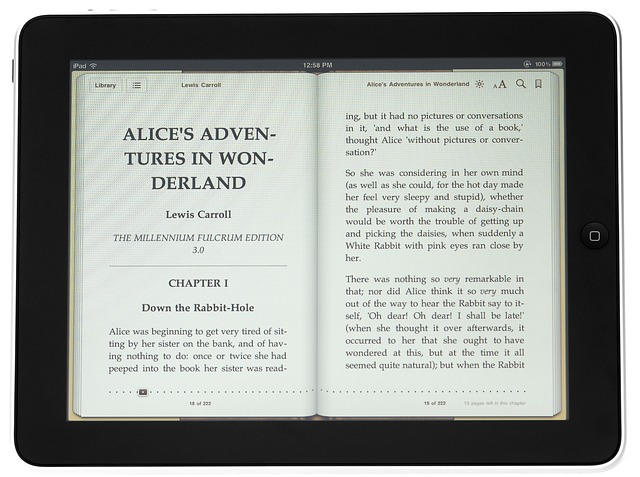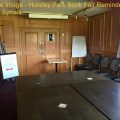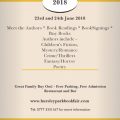When interviewing other writers for Chandler’s Ford Today, I love discovering who their favourite authors are. I end up making a mental note of all those writers they mention whom I’ve not read and whose works I must get around to investigating further. One thing that has often struck me, and also with interviews I’ve read in Writing Magazine and so on, is the importance of children’s fiction.
Now I owe my love of reading to my late mother who read widely and well fiction wise (almost everything from H.G. Wells to P.G. Wodehouse to Jane Austen to Terry Brooks to Daphne Du Maurier to Charles Dickens (amongst many others).

I still have my copies of The Readers’ Digest Book of Fairytales (a two volume set, both have their spines bound up by tape now!). These are the original fairytales collected by the Brothers Grimm, Charles Perrault etc and they are great books. I always loved looking at the colour plates (and they are wonderful works of art).
Adoring one set of books led me to reading other stories (Alice in Wonderland, The Narnia series and so on. I became hooked on the reading bug and have been ever since. (The reading bug also led directly to the writing one but that’s another story, appropriately!).

Those of us who write for Young Adults and upwards owe a huge debt to those who write children’s fiction. I’m defining children’s fiction as anything aimed for the under-12s.
Why the huge debt? Because most people who read books geared at YA upwards have always read books. They progress from children’s board and picture books, to books for pre-school children, those aged 5 to 8 and so on. They don’t just come straight into reading adult fiction.

Our children’s fiction colleagues are doing the groundwork then in instilling a lifetime of loving books and reading in adult fiction writers’ future readers! So to dismiss children’s fiction is misguided, to say the least.
Yes, there will be those who discover books at a later stage in life. While this is not a scientific test in any way, based on the interviews I’ve read over years, I would say the vast majority of people have loved books since they were young and keep up the habit of reading. Reading becomes a way of life. All that changes is what they read as they develop and as tastes change.
I was a huge fan of Enid Blyton’s Famous Five series and collected the paperbacks. The local newsagent had them in and I couldn’t wait for the next edition to come out. If I recall correctly, the books came out monthly.
I thought they were great stories though the advent of the mobile phone has put paid to Enid’s kind of adventure tale now. If alive and writing now, she would have to find a legitimate way for the Five not to have their mobiles with them and I’m not sure how often she would be able to do that! This is one reason why children’s fiction writers often set their stories before the mobile phone became widely available or was invented at all. The other way round this is to set your story in a magical world. It is accepted in a magical setting, it would have its own forms of communication, bypassing the mobile phone altogether!).

I’ve liked the development of interactive books with CDs etc (they plant the idea of books being fun in kids’ minds I think) and also series like the Horrible History brand for younger readers. There is absolutely no reason why non-fiction shouldn’t be entertaining! This is an area I think has improved significantly over when I was growing up. Entertaining books, while still encouraging learning and reading, grip your readers and make it more “natural” for them to turn to a book at all.

And during the Harry Potter phenomenon as the books were coming out, I was pleased to see that the size of the books (especially The Goblet of Fire) did not deter younger readers. Kids will read books of whatever size if they are entertaining enough. So no pressure on the children’s authors then! (Incidentally, that doesn’t mean writing a huge novel just for the sake of it. The story has to be strong enough to justify a long book. You can’t fool kids. They will switch off if what they feel is reading is just “padding” and would not be prepared to “stick with it”).


I know I can’t write for children. My style and humour are both for an older age range. It’s where I am most drawn to write. Some of my stories also need my readers to have some pre-knowledge. (For example my story Calling the Doctor in From Light to Dark and Back Again needs readers to know the plot for a certain novel by Mary Shelley!).
The link with my book takes you to my Facebook page for it and, at the top, there is the book trailer produced by my publisher, Chapeltown Books. Part of this features Calling the Doctor as a taster for the rest of the book. I think it also proves I’m definitely not writing for the under-12s!


I do admire those who can write for children as the challenges are different from the ones I face writing for adults. For one thing, there is the question of which age range are you targeting and you need to allow for the fact that an age range of 8-10 will often have readers aged 7 and 11 as well and the writer needs to cover that. I know I’m writing for adults who like fantasy/fairytales. The age I’m writing for really doesn’t matter but it is crucial for children’s writers.
Then there’s the use of language… I could if I wanted to swear as much as I felt my characters would genuinely do so given the situations I’m putting them in. (Trust me, some of the situations, you really would swear!). Now for YA novels especially swearing could be legitimately used (in the way it never was when I was growing up) but for the under-12s? I don’t think so (even though so many would know the language having picked it up from the school playground. Do we all learn to swear there by the way? I know I increased my more specialist vocabulary there! ).
One development has been issue-led fiction for younger readers. I have mixed feelings on this. Yes, for YA and upwards, I think it would be apt to explore issues via books. But I would never want the idea of a book to “just” be entertaining to be dismissed. There is a case for escapism in literature. There is a case for a story to “just” be a story. The best stories have an unmistakable and strong theme (often more than one) in any case.
One thing I did like about the Harry Potter series was the range of characters from different backgrounds including from non-magical (”Muggles”) families. The whole theme of “pure blood” and the evils done in its name by Voldemort was thoroughly explored and if ever there was a series advocating accepting people for who they are and not their background, the Harry Potter series is it.
Was there any preaching? No. Stories can be a great way of getting a message across (Jesus told parables after all) but they have to be aimed at the right audience in the right way.

And I think children’s writers have the toughest challenge of all there.
Related posts:
Read interviews with Chandler’s Ford writer Allison Symes: Part 1 and Part 2.
Read blog posts by Allison Symes published on Chandler’s Ford Today.
Never miss out on another blog post. Subscribe here:



[…] week’s post is one I’ve wanted to write up for a while and I look at why children’s fiction matters to all writers. I write for adults yet know the vast majority of my audience will have been brought up on books […]